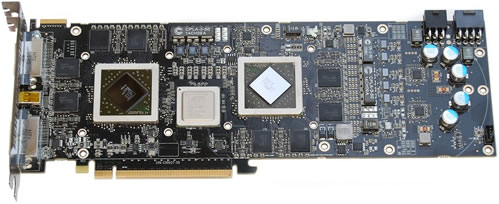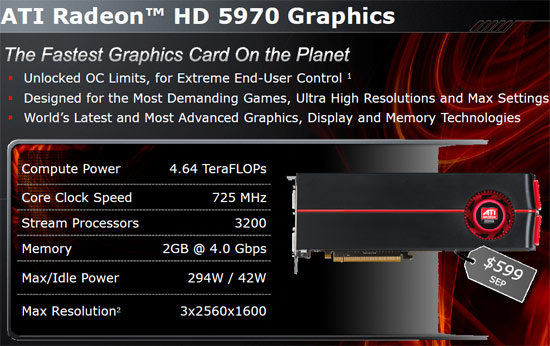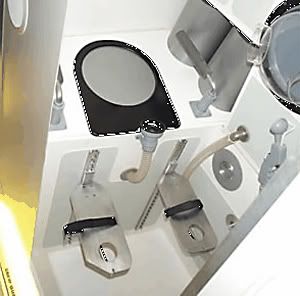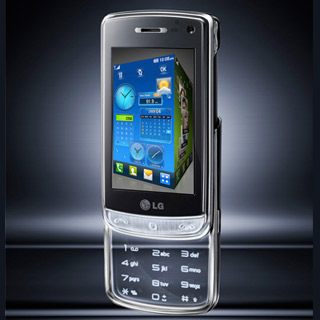







The fifth entry in the dark-as-death survival horror series improves rapidly after a dull first few hours, but you can’t escape the feeling that it’s a pseudo pastiche of Silent Hill 2, with clunky cameos from Pyramid Head and nods to previous events.
Available on: PC , Xbox 360, PS3
Genre: Action
Release date: Nov 6, 2008
Published by: Konami
Developed by: Double Helix
Franchise: Silent Hill
Min system requirements: 2.8GHz processor (3.2GHz Vista), 1GB RAM (2GB Vista), and a 256MB graphics card

The Silent Hill franchise has always been the blossoming antithesis of its survival horror rivals. Where Resident Evil has the player desperately foraging every drawer, chest and corpse for ammunition to fire at hordes of flesh-eating creatures, Silent Hill immerses the player in a macabre and enigmatic world of suspense, panic and uneasiness filled with nightmarish aberrations and the most flaccid of weapons to fight them with.

All the more disappointing that, with all this horror ancestry behind it, Silent Hill: Homecoming rarely does any of these things, and it is half-arsed and arbitrary when it does. The environments at first seem to convincingly capture the atmospheric and claustrophobic mood that you expect from this franchise, but the illusion is almost immediately exposed by the obvious linear nature of the game. You’ll spend a lot of your time wandering aimlessly up and down corridors and streets, fruitlessly trying door after door, only to be continually presented with that blasphemous profanity of action/adventure gaming: “This lock is broken”. You are thus left with the aneurism-inducing task of trying every door to figure out which predetermined path you’re supposed to be following.
In terms of combat, the clunky system of the previous games, which limited your capacity for fighting, was an endearing weakness that genuinely added to the sense of desperation and helplessness. This has been somewhat lost in Homecoming with the inclusion of a dodge button making a lot of the encounters with skinless dogs and spasmodic faceless nurses a little too easy and formulaic.

Homecoming is more of a Hostel-nodding, Jacob’s Ladder-winking attempt at emulating the Silent Hill movie, rather than the original game. We’re left with something that looks like a genuine tribute to its thriller heritage, but its mediocre and clichéd story, as well as linear and more combat-centric gameplay, means that Homecoming is too old-fashioned and lacks the originality and tension that made the previous games so enjoyable.

ATI revealed its last generation Radeon 5000 graphics family last September, when we got the chance to review the ATI Radeon HD 5870, and what a treat that was.
In a few tests the single-GPU Radeon HD 5870 was able to outgun the mighty GeForce GTX 295, while in most it managed to match or improve upon the Radeon HD 4870 X2. As you are likely aware, both of these products carry dual GPUs, which bring a number of implications, not to mention bigger price tags.
Looking forward we knew Nvidia would have no immediate response to the new Radeons, while on the other hand ATI was not done unleashing its full series of products. Subsequently we looked at two more products that were meant to underperform the flagship HD 5870: the slightly cut down Radeon HD 5850 and the mainstream aimed HD 5770.
From left to right: Radeon HD 5770, HD 5850, HD 5870, and HD 5970.
But as we discussed in our preliminary Radeon 5870 review, on the horizon was also a follow-up to the Radeon HD 4870 X2, code-named "Hemlock XT", which in essence would put together a pair of Radeon HD 5870 GPUs on a single PCB.
Today AMD is officially unveiling the Hemlock as the new ATI Radeon HD 5970, hoping to expand its current dominance in single-GPU performance with the fastest single-slot graphics card on the market -- a title that until today was reserved for Nvidia's dual-GPU GeForce GTX 295.
The Radeon HD 5970 looks to be well suited for the job. The GPUs used in this card use exactly the same configuration found on the Radeon HD 5870, while core and memory frequencies match those of the Radeon HD 5850. This provides the HD 5970 with an unmatched memory bandwidth of 256GB/s.
All this horsepower will come at a hefty price, as AMD expects to charge as much as $600 for it. This is a bit hard to swallow, but all things considered it's about where we expected it to stand among the rest of high-end graphics offerings.

The $400 Radeon HD 5870 is still sold out virtually everywhere due to extreme shortages. The Radeon HD 5850 version still costs $300, meaning that a pair of them would cost the same amount as a single Radeon HD 5970, and we do not expect the performance to be nearly as good. On the other side of the equation, Nvidia's top performer, the GeForce GTX 295 is selling for around $500.
As we see it, only extreme users looking for the best possible gaming experience - or the bragging rights attached to the label - will find the Radeon HD 5970 to make complete sense.
Knowing this is the 5970's intended market, AMD has stamped a big "unlocked" label over the card in our press kit. Perhaps more marketing buzz than actual functionality, the Radeon HD 5970 allows you to jack core and memory frequencies as high as you like -- or at least as high as they will go without compromising stability. This in itself is far from exciting news as there's been software available to do just that for ages.
The most interesting part should come from the ability to adjust voltages and thus increase the card's overclocking room, something we'll be checking in detail next.

Our review sample hung a total of 6cm off the edge of our Asus P6T Deluxe motherboard used for testing.



Cooling the Hemlock XT GPUs is a large aluminum heatsink made up of 36 fins. Measuring 16cm long, 7cm wide, and 2.5cm tall, it is slightly larger than that used in the Radeon HD 5870. Connected to the base of this heatsink is a massive copper plate which helps improve efficiency, while a 75x20mm blower fan draws air in from within the case and pushes it out through the rear of the graphics card.
For the most part this fan operates very quietly, helped by the impressively low 42 watt idle consumption of the Radeon HD 5970. When gaming, the fan will inevitably spin up as the card can consume up to 294 watts under load, but even with the increased thermal stress the 5970 does not scream at intolerable levels.

The heatsink and fan have been enclosed within a custom built housing that conceals the entire graphics card, which is the same design used with the Radeon HD 5870. This setup helps protect the card very well; Nvidia has been using similar enclosures for some time with their most prized graphics cards, such as the GTX 295.

Removing the heatsink exposes the two GPUs, GDDR5 memory chips, and a few other critical components.
With the heatsink off the Radeon HD 5970 looks almost identical to the Radeon HD 4870 X2, though it is noticeably longer.

Key changes involve the new GDDR5 memory, improved power circuitry, and an updated 2.0 PEX bridge from PLX Technologies, used to link the GPUs together. All this hardware is cooled via the large heatsink that covers the majority of the card’s 30cm long PCB.
GDDR5 memory works at an ever more impressive frequency (1.0GHz x 4) on this particular model, which features a total capacity of 2GB. The core configuration of the Radeon HD 5970 doubles everything in the 4870 X2 with 1600 (320x5) SPUs, 80 TAUs (Texture Address Units), and 32 ROPs (Rasterization Operator Units).

AMD’s reference card came equipped with Hynix ICs (H5GQ1H24AFR-T2C parts). These GDDR5 modules are rated for 1.25GHz operation, so we expect to push them beyond the stock 1.0GHz configuration without hassle.

In order to feed the graphics card enough power, a pair of PCI Express power connectors are used (6-pin and 8-pin sockets). This is the same configuration used by previous dual-GPU graphics cards such as the GeForce 9800 GX2 and Radeon HD 4870 X2, so current high-end power supplies should cater for this new graphics card.

The Radeon HD 5970 naturally supports CrossfireX technology, and therefore in the standard position we find a single connector for bridging two cards together.
The only other connectors can be found on the I/O panel. Our sample featured two dual-DVI connectors and a Mini Display Port connection. Just like the Radeon HD 5870, the 5970 can support a maximum resolution of 2560x1600 on not one but rather three monitors.
Speeds & Feeds


It shows how far the mobile world has come when even the most budget-friendly phones can pack some touchscreen action. We’ve seen a few devices try and go down the smartphone route on the cheap (the HTC Tattoo) and some offering bog-standard touch at rock-bottom prices (Orange Vegas we are looking at you), but LG’s latest money friendly endeavour, the LG Pop, tries to bridge the gap between price and functionality.
Popping on to the scene for a snip under £100, the LG GD510 Pop has a surprising amount of decent features on offer. On-board there’s a 3.2-megapixel camera, a 3-inch WQVGA screen, wireless FM radio and expandable MicroSD memory.
But it’s also surprising the lack of features it houses, some that you’ve come to expect on even the most standard of devices –3G and to a lesser extent Wi-Fi are both missing in action. Size-wise the phone is the Kylie of the mobile world: small but perfectly formed.
Size matters
While it measures a mere 97.8 x 49.5 x 11.2mm, it does boast the biggest touchscreen on a phone this size, something that will come as relief to those with fumble fingers. In an attempt to make things as simple as possible, real buttons are scarce. What you get is three in all: one on the Pop’s front which acts as a home screen button; one on the side of the handset which, when pressed, transports you to your favourite apps and also moonlights as the shutter button for the phone’s camera; and finally there’s one on top which powers the GD510 down.
The main interface of the Pop is an interesting one. You can cram it as much as you want with widgets available on the phone. If the UI looks to be getting a bit cluttered, then shake you’re the Pop to align them. It’s a great little feature which gives the phone a bit of character.
Those who have played with the LG Cookie will be right at home with the Pop. Like the Cookie, default widgets on the homepage include a clock, calendar and access to this internet – although all of these can be toggled to your specs. Flick the screen to the left and you will notice that there are two more ‘home’ screens to add things to. One of these is for your contacts, while the other can be an extension of your original homepage. This is where the Pop shows off its true colours. With access here to avatars for your contacts and even a virtual farmyard, LG is definitely pitching the phone at younger social-networkers.
Being a budget-friendly device means that the phone’s touchscreen is a bit of a ’mare to use. The resistive touch is sluggish and accessing widgets took longer than expected to open. Sometimes it did take two to three attempts to perform a task which was a tad annoying.
Handy features do keep popping up to make you think the device is offering more than its budget price suggests. Things like the Status Summary page, which points out how much battery memory you have left is great, and from here you can also toggle Bluetooth on and off.
Pop tart or pop star?
Drill into the phone a bit more and it does become apparent that what you are using is a low-end device. Opening up and playing songs and movies is far too sluggish for our liking and while it’s great there’s an on-board camera and camcorder the footage you get from both doesn’t exactly set the world on fire. It’s a shame the phone wasn’t smarter as there’s a mountain of features available. With around 32 apps to choose from, the phone is perfectly packed to make your on-the-go life that little bit easier.
In the end, the LG GD510 Pop teases you with the amount of features it’s got but never really delivers. It’s great for those who have never tested the touchscreen waters before but those who can spot a resistive screen from 12 paces may want to look elsewhere.






























Copyright 2010 Are u in Love with your Machine ? . Powered by Blogger | Blogger Templates created by Deluxe Templates | Based Wordpress by Wpcrunchy